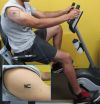(Press-News.org) SAN FRANCISCO, Aug. 13, 2014 — As countries try to rid themselves of toxic mercury pollution, some people are slathering and even injecting creams containing the metal onto or under their skin to lighten it, putting themselves and others at risk for serious health problems. To find those most at risk, scientists are reporting today that they can now identify these creams and intervene much faster than before. They're speaking at the 248th National Meeting & Exposition of the American Chemical Society (ACS).
The meeting, organized by the world's largest scientific society, features nearly 12,000 presentations on a wide range of science topics and is being held here through Thursday.
"In the U.S., the limit on mercury in products is 1 part per million," says Gordon Vrdoljak, Ph.D., of the California Department of Public Health. "In some of these creams, we've been finding levels as high as 210,000 parts per million — really substantial amounts of mercury. If people are using the product quite regularly, their hands will exude it, it will get in their food, on their countertops, on the sheets their kids sleep on."
Identifying the toxic products has been a slow process, however. So, Vrdoljak turned to an instrument that uses a technique called total reflection x-ray fluorescence. He found that the machine can screen product samples for mercury content far more efficiently, and just as accurately, as its well-established but time-consuming counterpart. That means the team he works with and others around the country will be able to identify the sources of mercury poisoning and help those affected much faster than before.
"Testing one product using the old technique could take days," he said. "Using the new instrument, I can run through 20 or 30 samples in a day quite easily. By identifying those products that contain mercury, we can direct people to remove them and clean up their households."
Although the metal does lighten skin, dark spots and even acne, research has shown that the silvery liquid can cause a number of health problems, including lower cognitive functioning, kidney damage, headaches, fatigue, hand tremors, depression and other symptoms. As a result, the U.S. and many other countries have set low limits on or have banned mercury in consumer products.
But demand is high among certain populations for these skin-lightening products. People bring them into the U.S. in their personal luggage from other regions where the creams are popular, including Asia, Central America, the Middle East and Africa, Vrdoljak explains. Then they distribute the creams to friends and families or sell them through small ethnic stores — off the regulatory radar.
When cream users start noticing hand shaking, headaches and other symptoms, they visit their doctors. Through a urine test, they can find out whether they have high levels of mercury. In these cases, Vrdoljak says his team can step in. They analyze dozens of bottles and containers from the patients' homes to root out the products that contain mercury. Their work has led to two product recalls earlier this year, but often, they find the cosmetics are homemade and come in unmarked containers.
"In the U.S., it's hard to gauge how much of these products are being used," Vrdoljak says. "But at least with this new technique, we can identify them much faster and help more people than before."
INFORMATION:
A press conference on this topic will be held Wednesday, August 13, at 2:30 p.m. Pacific time in the Moscone Center, North Building. Reporters may report to Room 113 in person, or access live video of the event and ask questions at the ACS Ustream channel.
The American Chemical Society is a nonprofit organization chartered by the U.S. Congress. With more than 161,000 members, ACS is the world's largest scientific society and a global leader in providing access to chemistry-related research through its multiple databases, peer-reviewed journals and scientific conferences. Its main offices are in Washington, D.C., and Columbus, Ohio.
To automatically receive news releases from the American Chemical Society, contact newsroom@acs.org.
Note to journalists: Please report that this research is being presented at a meeting of the American Chemical Society.
Follow us: Twitter | Facebook
Title
Comparison of XRF, TXRF, and ICP-MS Methods for Determination of Mercury in Face Cream
Abstract
A number of reports by various regulators, media, and watchdog groups have identified numerous face cream products containing percent levels of mercury that are far in excess of the FDA regulatory limit of 1 ppm. The mercury is added to provide skin bleaching properties to the face cream, and poses a serious health risk to consumer through dermal exposure as well as inhalation of volatile forms of mercury in some of these products. This study describes the development of several different XRF and TXRF methods for determination of mercury in several face cream products containing non-detectable to percent levels of mercury, as well as a critical evaluation of each method and comparison of results to those from the more widely accepted ICP-MS method. For screening and identifying such products in the field, XRF is the method of choice as it involves direct analysis of the sample with analysis times on the order of one minute or less, and can readily detect the presence of mercury down to single ppm levels. Although calibration of the XRF analyzer using authentic standards yielded results that compared well to those from ICP-MS for homogeneous products, the results were more variable for products containing small crystals or chunks of inorganic mercury salts. For these products, more accurate quantification of mercury requires more time-consuming sample preparation with microwave digestion to provide a representative subsample for analysis, followed by either TXRF and ICP-MS analysis. The TXRF method uses an internal standard and requires no additional calibration, and gave results that compared well to those from ICP-MS. Although ICP-MS is often the method of choice for trace level determination of a variety of elements, it is the most expensive of all of these methods, has detection limits which are orders of magnitude lower than necessary for this application, involved the use of dilution factors on the order of 1,000,000, and gave erroneous results for two samples due to either cross contamination or carryover. Moreover, the inadvertent analysis of samples containing high levels of mercury via ICP-MS may lead to contamination of this equipment which is often used for trace level analysis. Given the prevalence of these products and their sale and use in third world countries, it is recommended that portable XRF be used to screen for such products and XRF or TXRF methods be used for accurate quantification of mercury in homogeneous and heterogeneous products, respectively.
Rooting out skin creams that contain toxic mercury
2014-08-13
ELSE PRESS RELEASES FROM THIS DATE:
Tattoo biobatteries produce power from sweat (video)
2014-08-13
SAN FRANCISCO, Aug. 13, 2014 — In the future, working up a sweat by exercising may not only be good for your health, but it could also power your small electronic devices. Researchers will report today that they have designed a sensor in the form of a temporary tattoo that can both monitor a person's progress during exercise and produce power from their perspiration.
The team described the approach in one of nearly 12,000 presentations at the 248th National Meeting & Exposition of the American Chemical Society (ACS), the world's largest scientific society, taking place ...
A new look at what's in 'fracking' fluids raises red flags
2014-08-13
SAN FRANCISCO, Aug. 13, 2014 — As the oil and gas drilling technique called hydraulic fracturing (or "fracking") proliferates, a new study on the contents of the fluids involved in the process raises concerns about several ingredients. The scientists presenting the work today at the 248th National Meeting & Exposition of the American Chemical Society (ACS) say that out of nearly 200 commonly used compounds, there's very little known about the potential health risks of about one-third, and eight are toxic to mammals.
The meeting features nearly 12,000 presentations on ...
Passengers who survived terrifying Air Transat flight in 2001 help psychologists uncover new clues about post-traumatic stress vulnerability
2014-08-13
Toronto, Canada – An extraordinary opportunity to study memory and post-traumatic stress disorder (PTSD) in a group of Air Transat passengers who experienced 30 minutes of unimaginable terror over the Atlantic Ocean in 2001 has resulted in the discovery of a potential risk factor that may help predict who is most vulnerable to PTSD.
The study, led by researchers at Baycrest Health Sciences, is published online this week in the journal Clinical Psychological Science – ahead of print publication. It is the first to involve detailed interviews and psychological testing in ...
Why seniors don't eat: It's complicated
2014-08-13
WASHINGTON – More than half of older adults who visit emergency departments are either malnourished or at risk for malnutrition, but not because of lack of access to health care, critical illness or dementia. Despite clear signs of malnutrition or risk of malnutrition, more than three-quarters had never previously been diagnosed with malnutrition, according to the results of a study to be published online tomorrow in Annals of Emergency Medicine ("Malnutrition Among Cognitively Intact, Non-Critically Ill Older Adults in the Emergency Department").
"We were surprised ...
Giant Amazon fish becoming extinct in many fishing communities, saved in others
2014-08-13
An international team of scientists has discovered that a large, commercially important fish from the Amazon Basin has become extinct in some local fishing communities.
The team compared mainstream bioeconomic theory — which policymakers have depended on in order to protect fish populations — with the lesser-known "fishing-down" theory, which predicts that large, high-value, easy-to-catch fish can be fished to extinction.
"Bioeconomic thinking has predicted that scarcity would drive up fishing costs, which would increase price and help save depleted species," said study ...
Gene that controls nerve conduction velocity linked to multiple sclerosis
2014-08-13
Philadelphia, PA, August 13, 2014 – A new study published in The American Journal of Pathology identifies a novel gene that controls nerve conduction velocity. Investigators report that even minor reductions in conduction velocity may aggravate disease in multiple sclerosis (MS) patients and in mice bred for the MS-like condition experimental autoimmune encephalomyelitis (EAE).
A strong tool for investigating the pathophysiology of a complex disease is the identification of underlying genetic controls. Multiple genes have been implicated as contributing to the risk of ...
Clotting drug linked to fewer blood transfusions in joint surgery
2014-08-13
Tranexamic acid has been shown to reduce blood loss during or shortly after major joint surgery (the perioperative stage). However, safety concerns remain because large scale effectiveness studies are lacking.
In the USA, over 1 million hip and knee replacements are performed each year. In
England and Wales the figure is about 180,000.
So a team of US researchers, led by Dr Stavros Memtsoudis at Hospital for Special Surgery, Weill Cornell Medical College, and Dr Jashvant Poeran at Mount Sinai School of Medicine, both in New York, set out to determine the effectiveness ...
The Lancet Diabetes & Endocrinology: 2 out of every 5 Americans expected to develop type 2 diabetes during their lifetime
2014-08-13
Close to half (40%) of the adult population of the USA is expected to develop type 2 diabetes at some point during their lifetime, suggests a major study published in The Lancet Diabetes & Endocrinology. The future looks even worse for some ethnic minority groups, with one in two (> 50%) Hispanic men and women and non-Hispanic black women predicted to develop the disease.
A team of US researchers combined data from nationally representative US population interviews and death certificates for about 600 000 adults to estimate trends in the lifetime risk of diabetes and ...
The Lancet: nearly half of women at risk of preterm birth do not receive cheap drug that could prevent millions of newborn deaths
2014-08-13
A major international study of more than 303 000 births in 29 low-income and middle-income countries has found that only half (52%) of women who are eligible to receive a simple, effective, low-cost treatment to prevent death and disability in their newborn babies are getting it.
The findings, published in The Lancet, highlight striking gaps in the practice of using antenatal (before birth) steroid injections—known to significantly reduce the risk of death, respiratory distress syndrome (a consequence of immature lung development), cerebroventricular haemorrhage (bleeding ...
Dartmouth study demonstrates key brain region in contextual memories
2014-08-13
Dartmouth researchers demonstrate in a new study that a previously understudied part of the brain, the retrosplenial cortex, is essential for forming the basis for contextual memories, which help you to recall events ranging from global disasters to where you parked your car.
The findings appear in the journal The Journal of Neuroscience. A PDF of the study is available on request.
An important aspect of memory is the ability to recall the physical place, or context, in which an event occurred. For example, in recalling emotionally charged events, such as the Sept. ...


